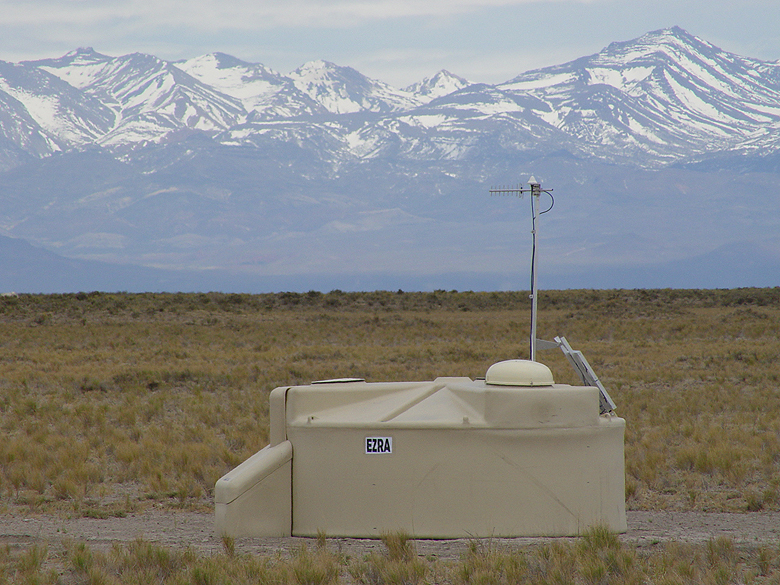There's more than one way to study particle physics. You can use huge human-made accelerators such as the Tevatron at Fermilab. Or you can rely on nature to supply you with its tiniest constituents for research.
Tapping nature's supply of cosmic rays is one of the oldest forms of particle physics research but the Pierre Auger Observatory in Argentina gives it a modern twist with cutting-edge technology, including the world's largest array of detectors and solar panels powering them.
Angela Olinto, University of Chicago astronomy and astrophysics professor, said the chance to find out about the birth of the universe and the opportunity to work in a field with a long history drew her to the study of cosmic rays and the Pierre Auger collaboration. Olinto captivated an audience of about 500 people at Fermilab on Feb. 27 for a lecture on the Pierre Auger Observatory.
"The birth of particle physics is closely tied to cosmic rays," she said.
Cosmic rays may provide a window into exotic, undiscovered particles or explain dark matter, the mysterious, invisible matter thought to influence the motion and structure of galaxies.
Ultimately, scientists want to know the origin of cosmic rays. The Pierre Auger Observatory project, which includes 700 scientists, 70 institutions, and 18 countries, announced in 2007 that active galactic nuclei are the most likely source of the high-energy cosmic rays. An AGN is thought to contain a massive black hole that swallows gas, dust, and matter from the surrounding galaxy and spews out particles and energy.
The collaboration hopes to expand this search by complementing its study of the Southern Hemisphere with a detector array for the Northern Hemisphere. The collaboration has a proposal for a Pierre Auger north, which would cover more than 8000 square miles in Colorado. The US portion of the collaboration expects to present in the next few weeks its proposal to the Particle Astrophysics Science Advisory Group, which advises the US Department of Energy and National Science Foundation.
Olinto briefed the audience on the project's evolution so far: Named for the French physicist who discovered cosmic rays in 1938, the Pierre Auger project was born at Fermilab in 1995. Scientists wanted to study cosmic rays, the highest energy particles ever recorded in nature, which come from the Sun, exploding stars, and probably black holes, as Pierre Auger recently documented. These particles have about 100 times more energy than the particles coming out of the Tevatron, the highest-energy particle accelerator currently operating. When one of these supercharged particles hits the Earth's atmosphere, it creates a shower of 200 billion secondary particles cascading to the ground.

Pierre Auger detector tanks sit on the pampas in Argentina. Photo courtesy of the Pierre Auger collaboration.
Detector tanks filled with deionized water near Malargüe, Argentina--sitting among the beautiful backdrop of the Andes Mountains--measure properties of these particles. This detector array consists of 1600 detectors spaced roughly one mile apart in groups spread over about 3000 square miles.
As a charged particle passes through a tank, the water inside is briefly lit up. That flash's timing is recorded by the light detectors to better than one ten-millionth of a second. Telescopes also record the ultraviolet fluorescent light produced by the showers.
The larger the array, the greater likelihood it has of capturing these supercharged particles. "The good news is we have particles out there," Olinto says. "The difficulty is that they come infrequently, so the detector has to be very large."
By Kristine Crane






